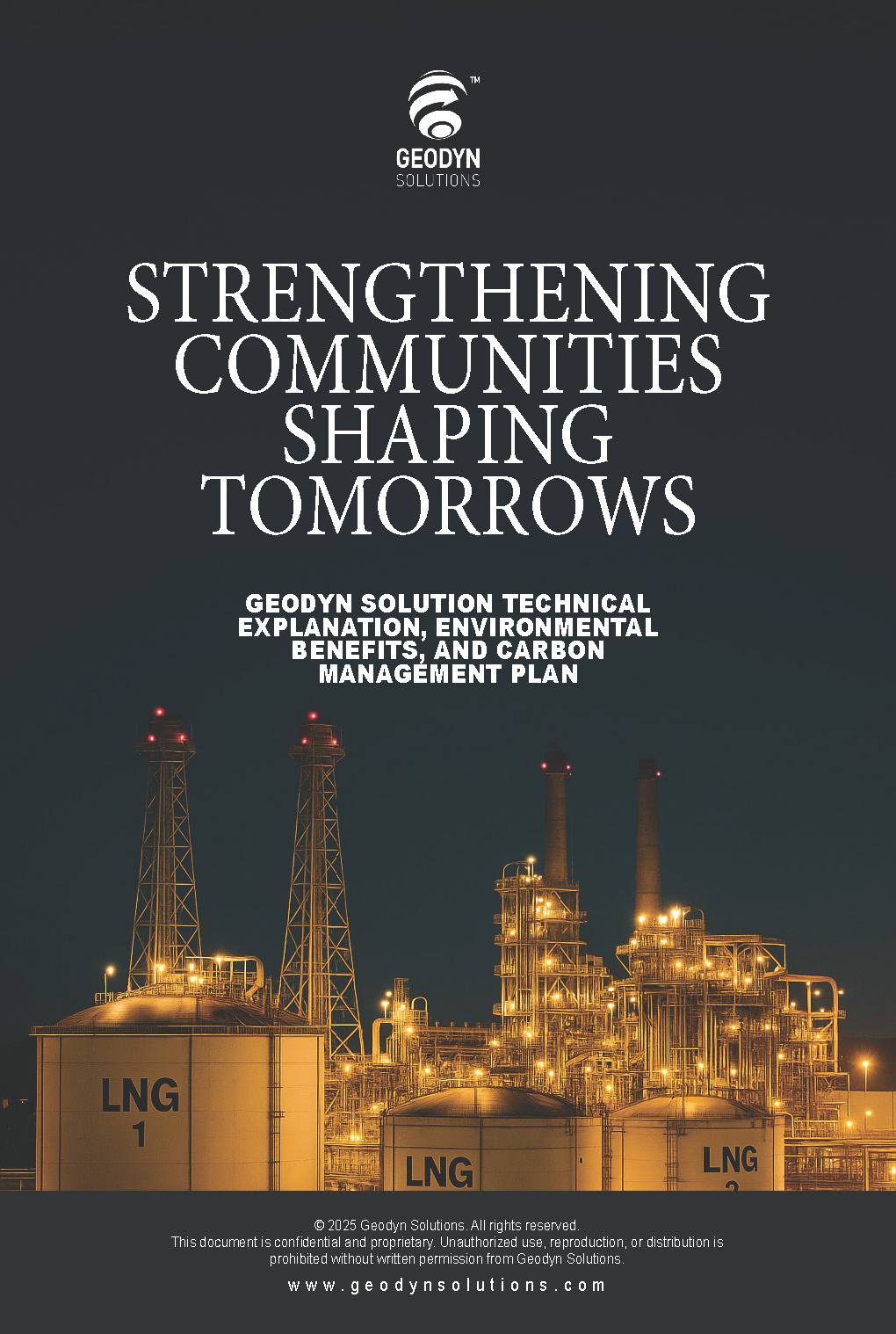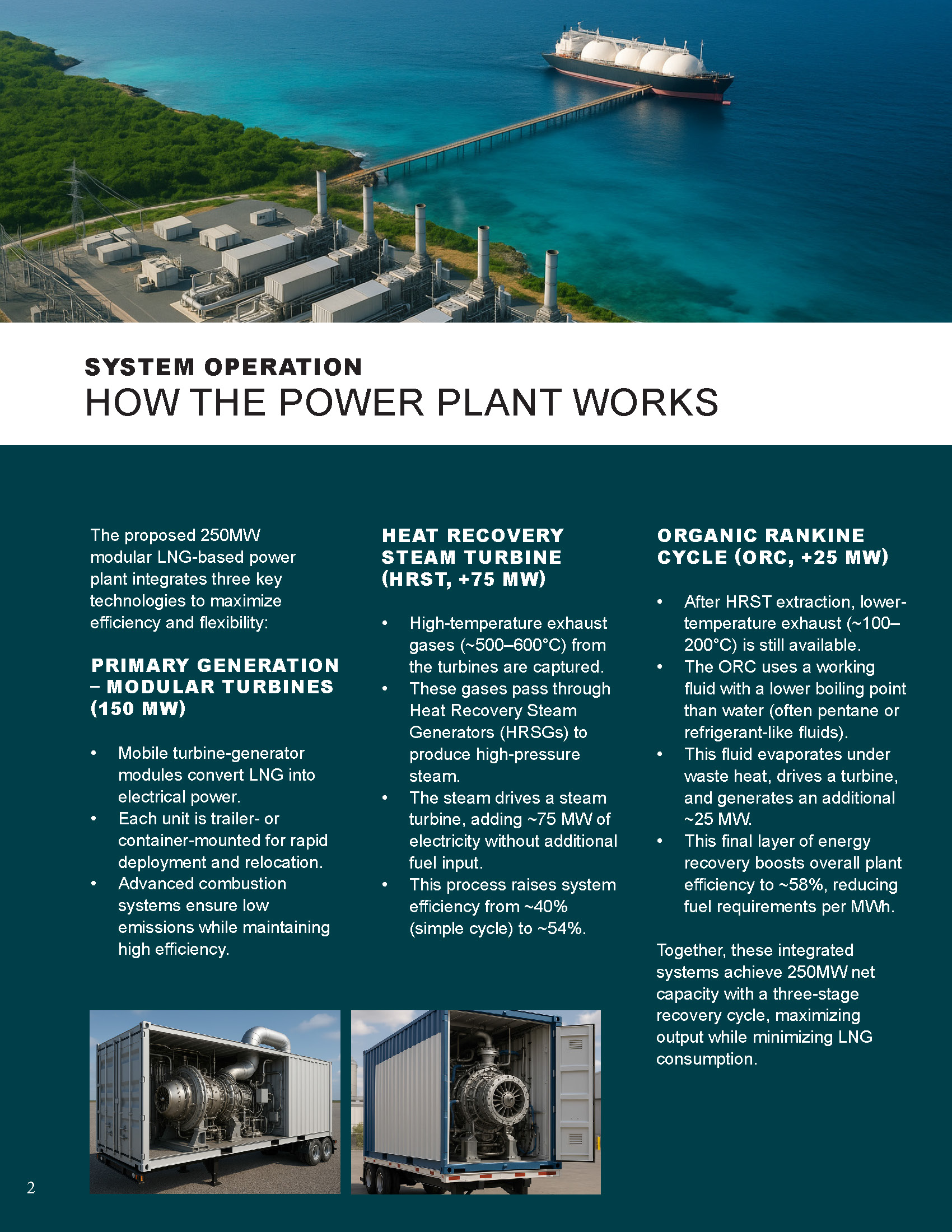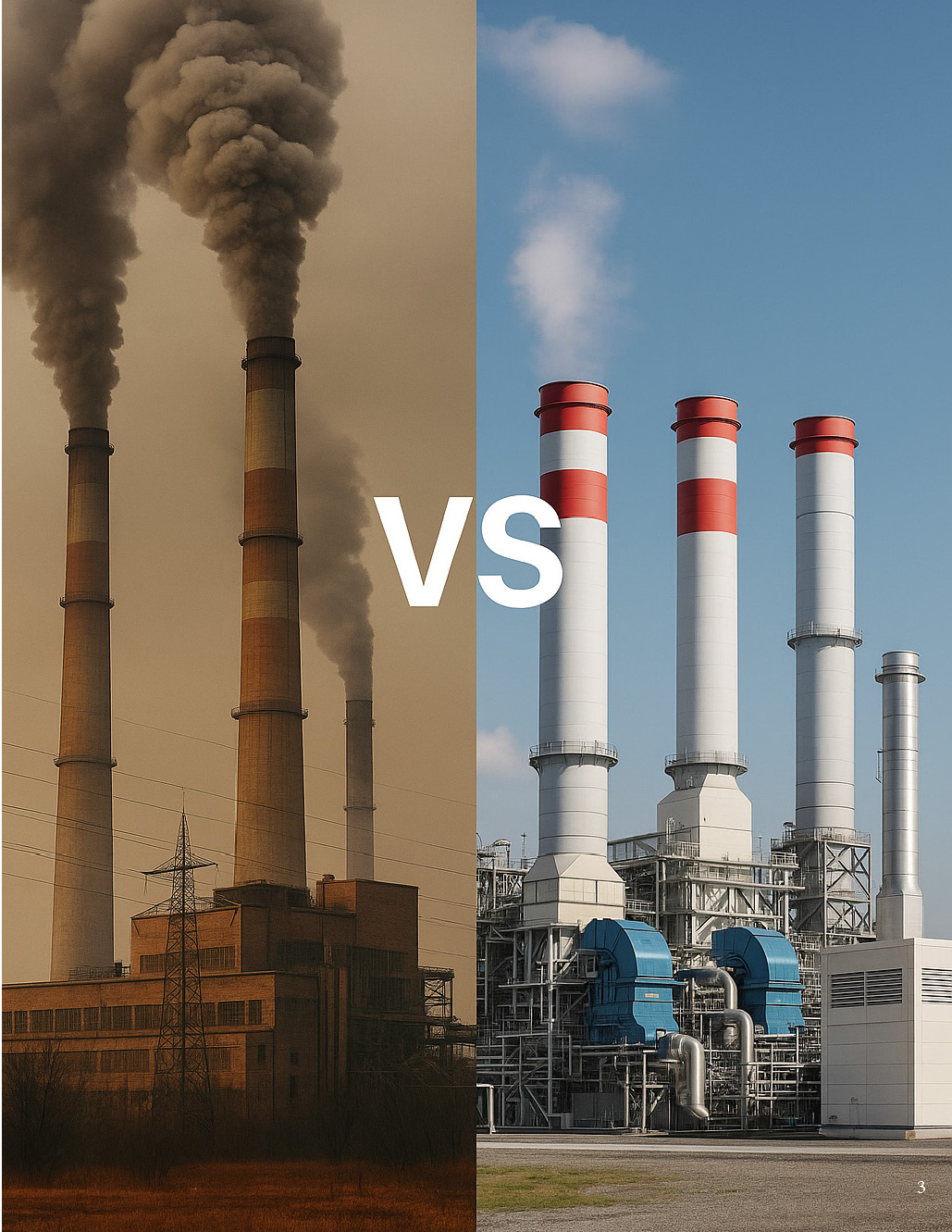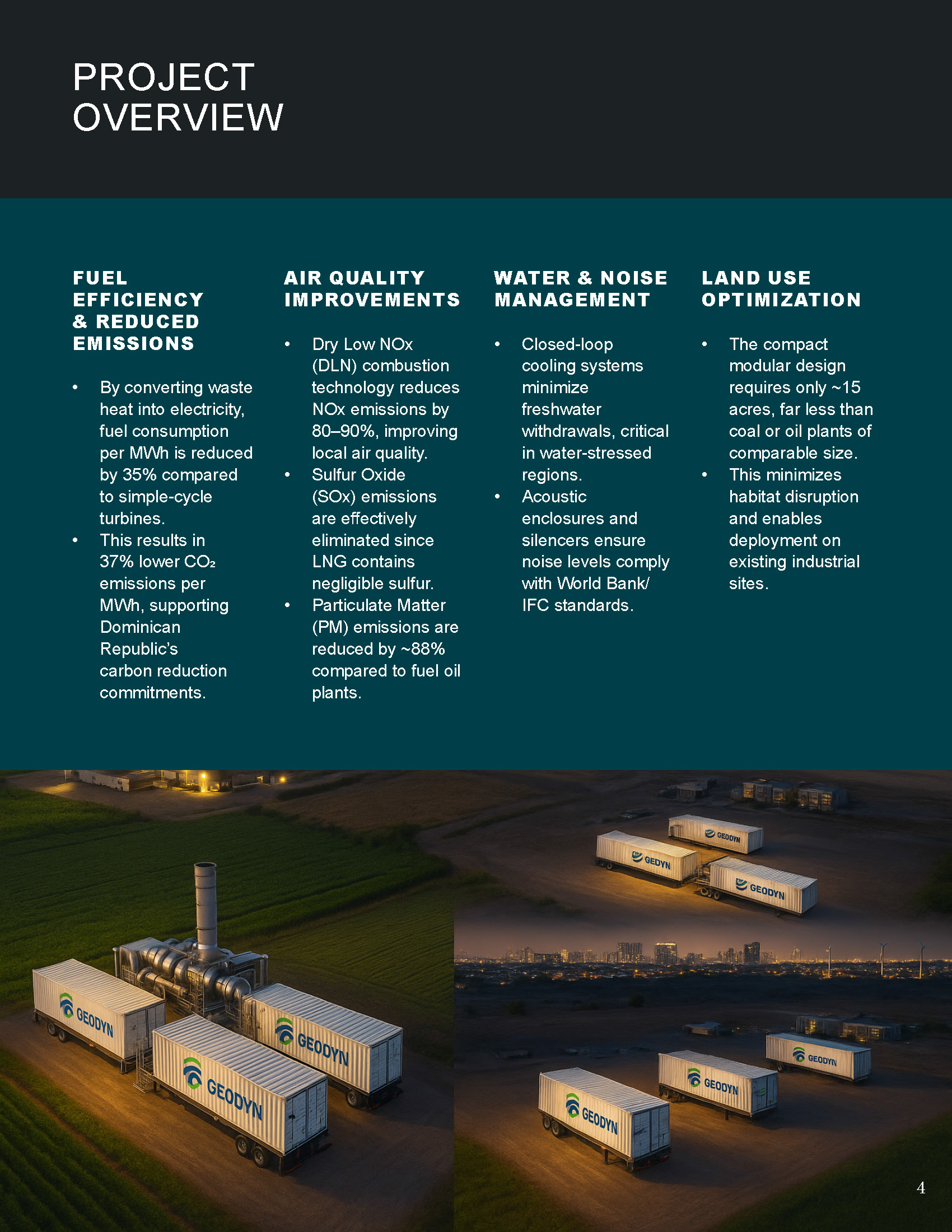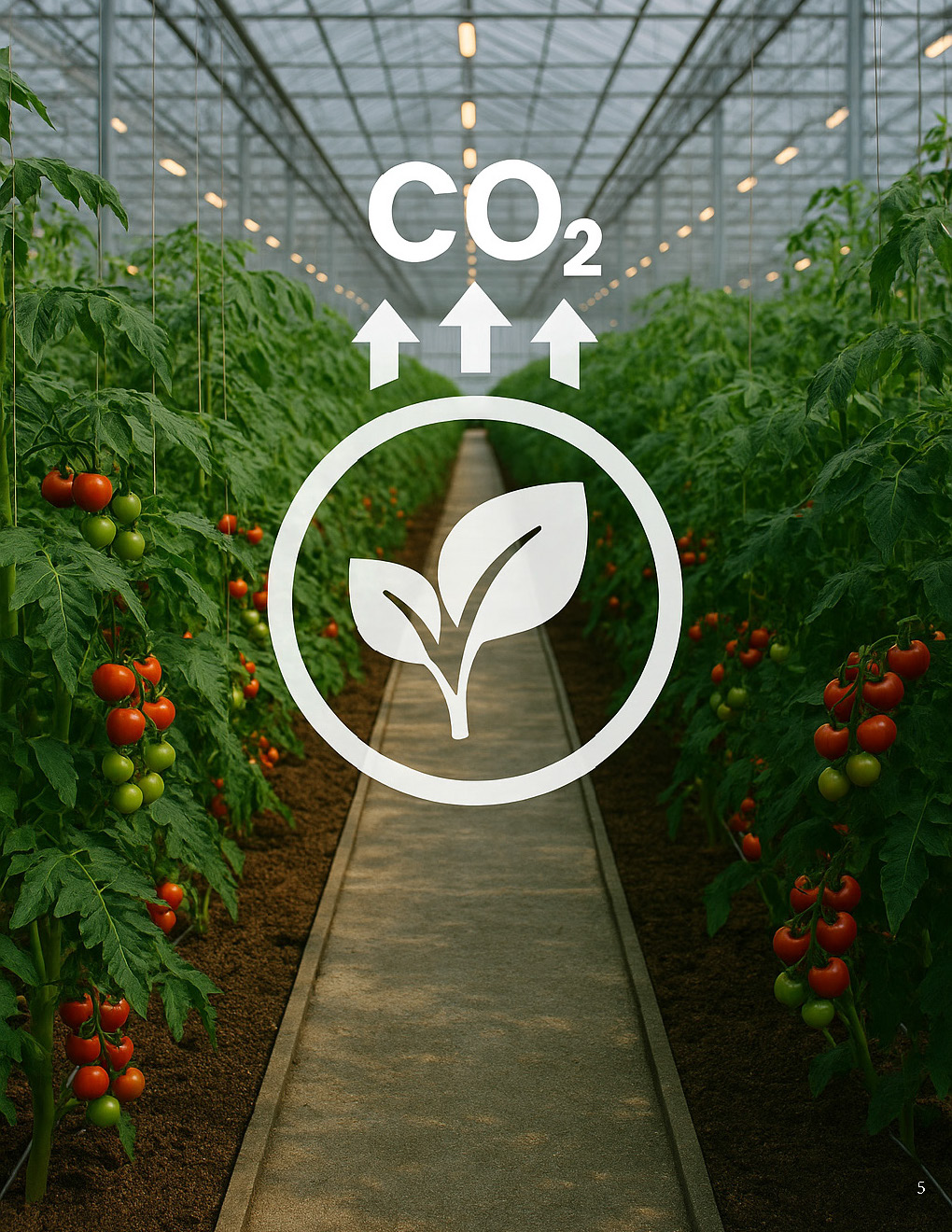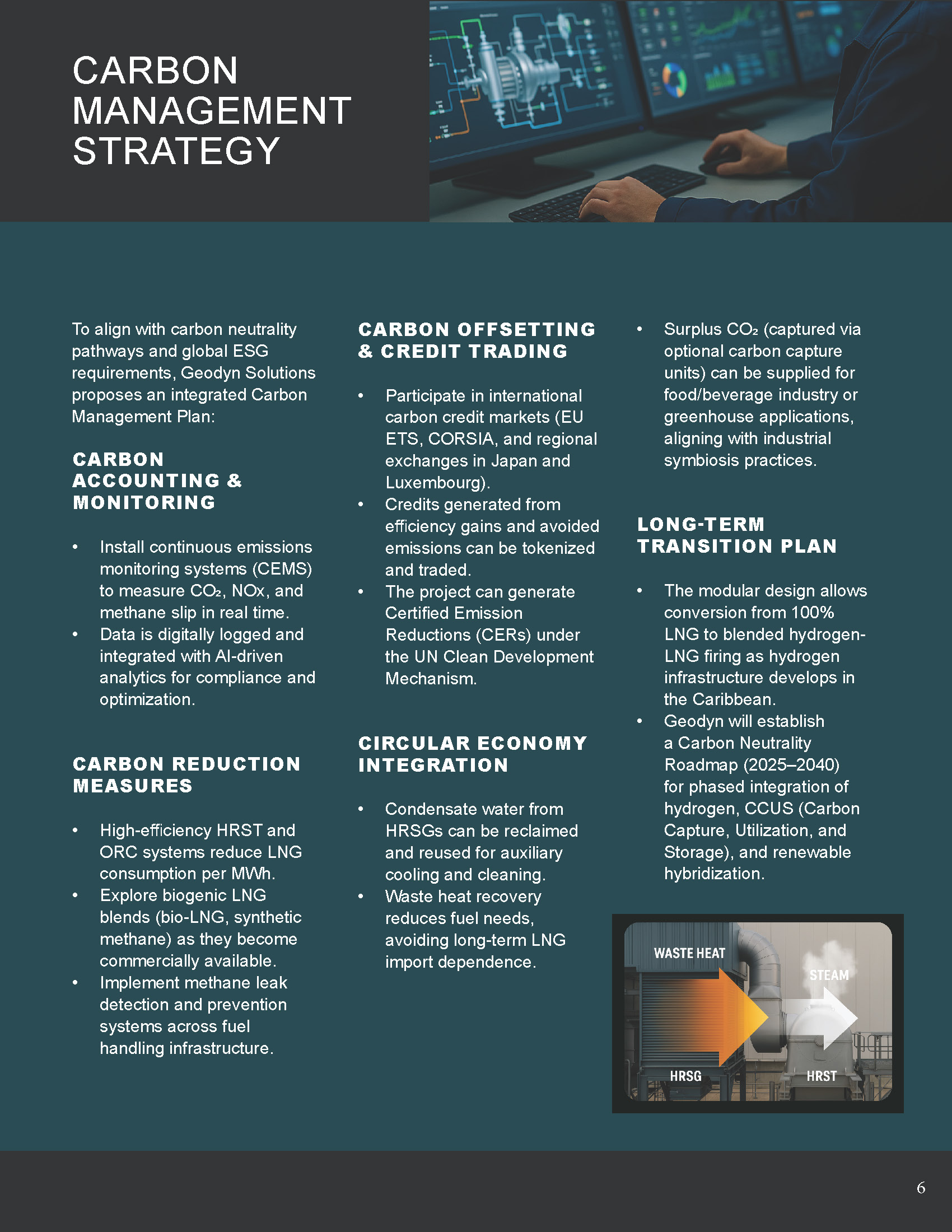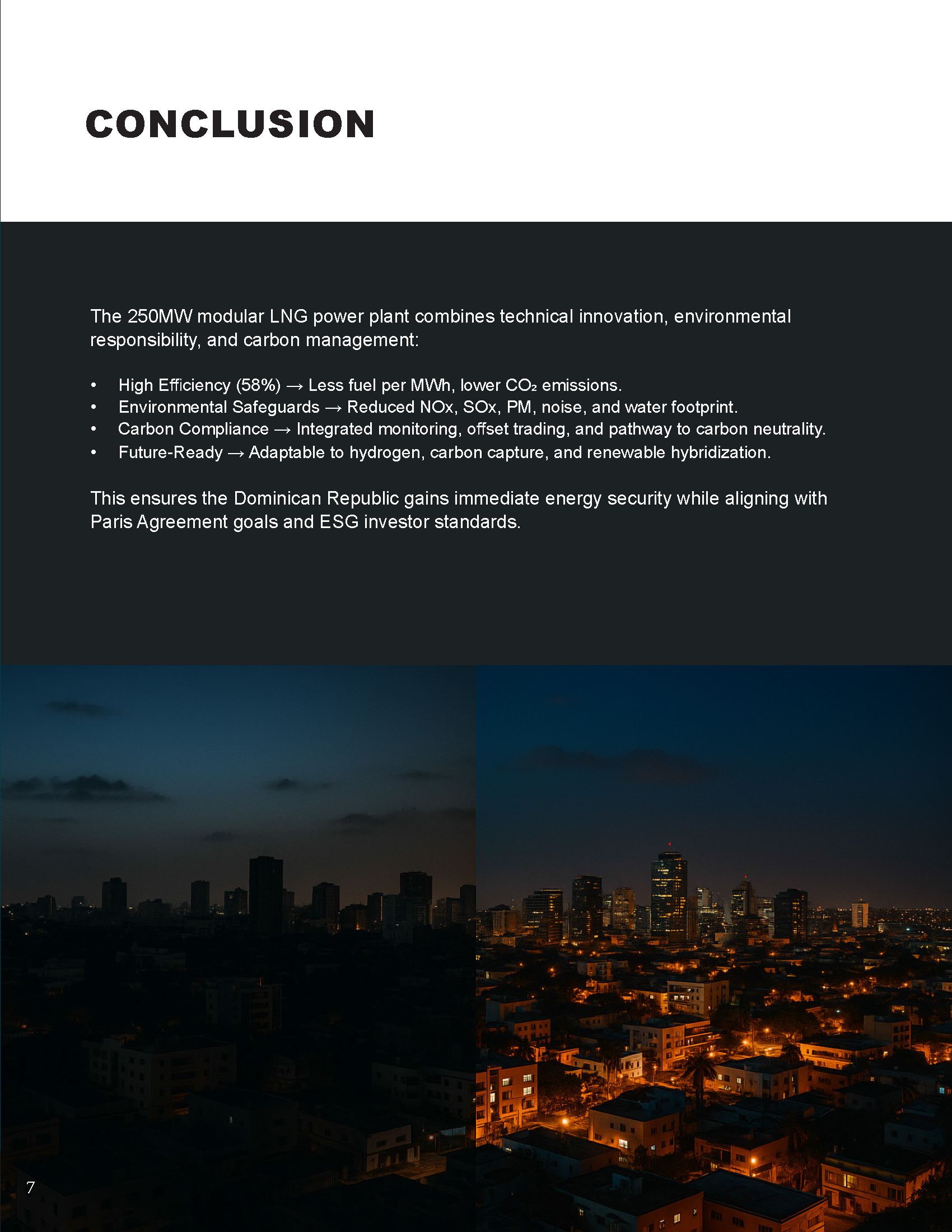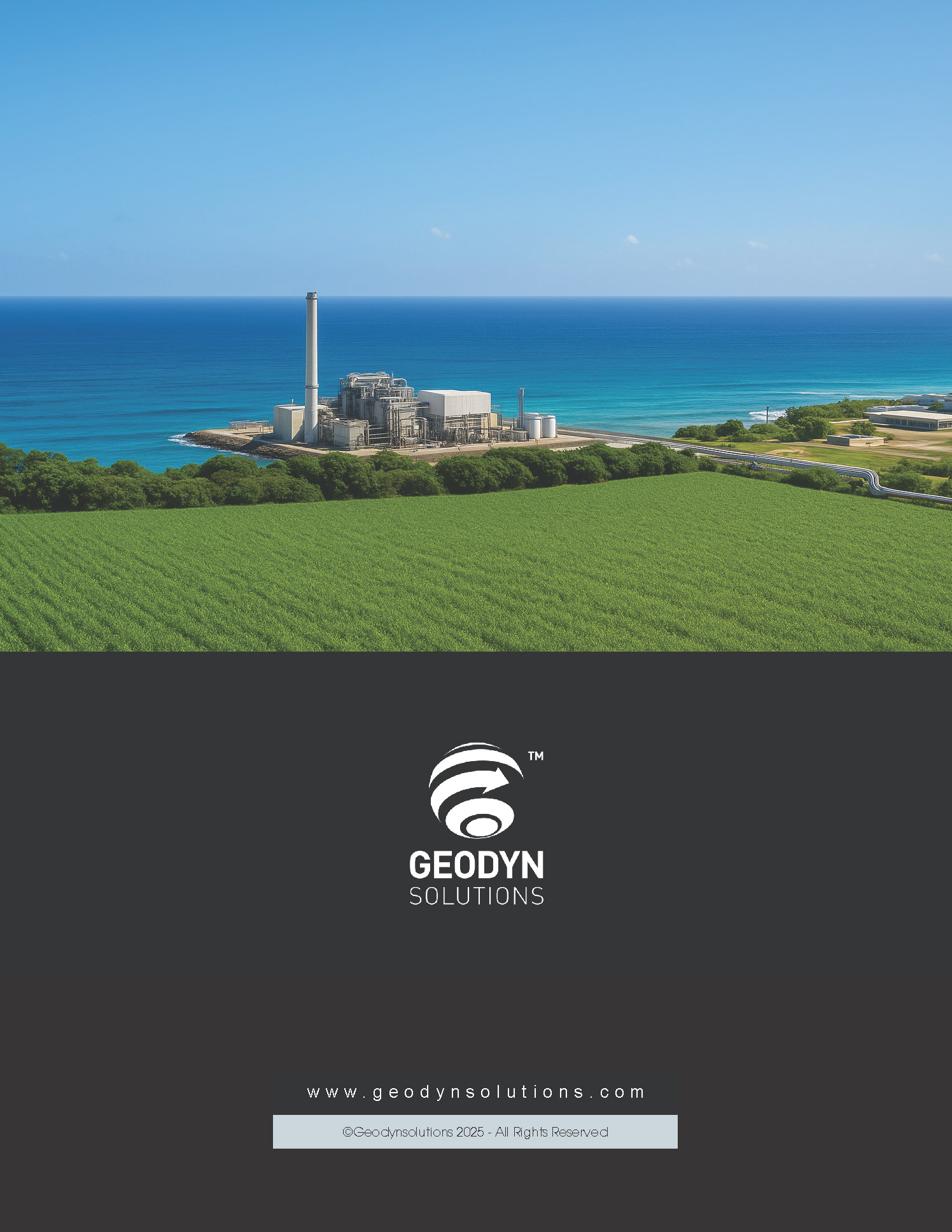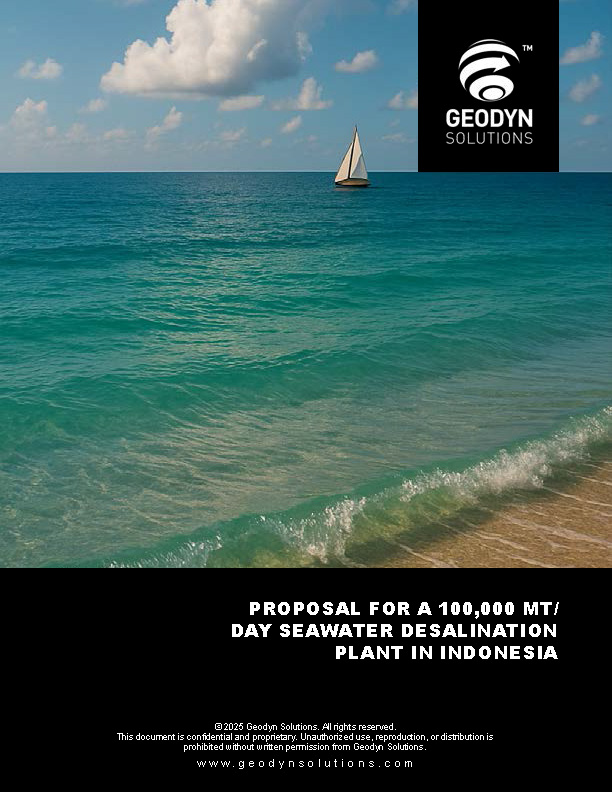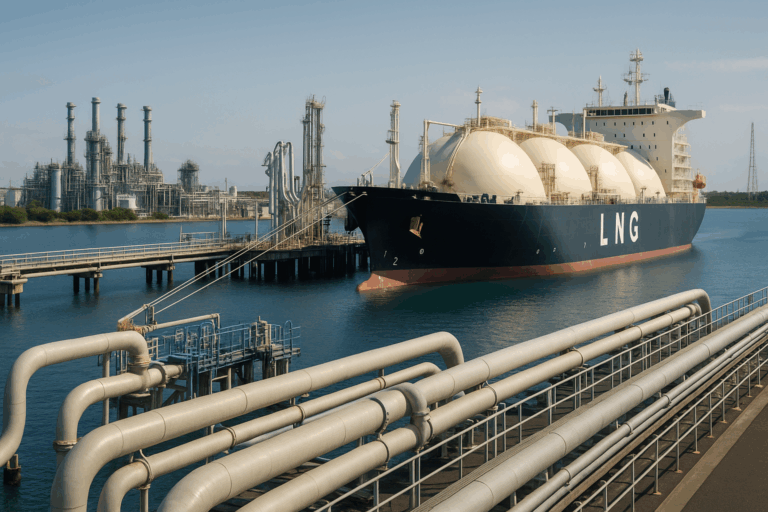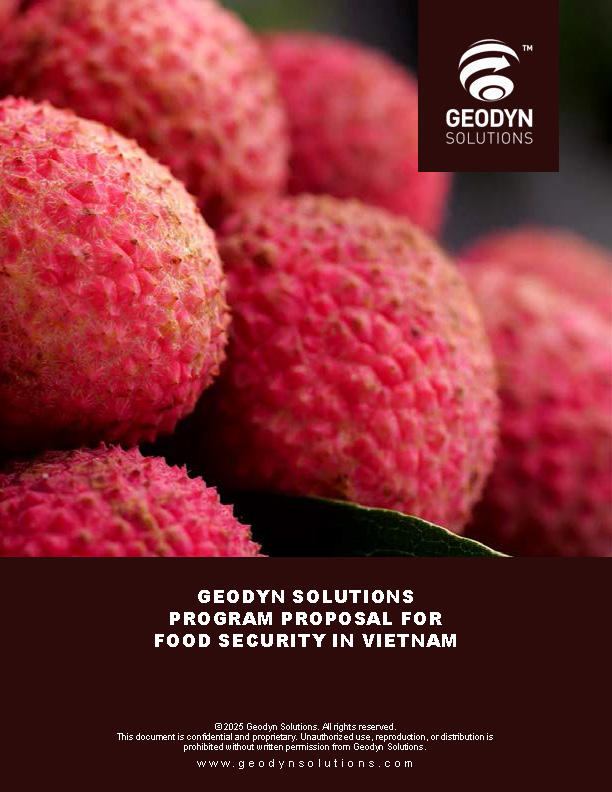Geodyn Solution Technical Explanation-Environmental Benefits-and Carbon Management Plan
- System Operation – How the Power Plant Works
The proposed 250MW modular LNG-based power plant integrates three key technologies to maximize efficiency and flexibility:
- Primary Generation – Modular Turbines (150 MW)
- Mobile turbine-generator modules convert LNG into electrical power.
- Each unit is trailer- or container-mounted for rapid deployment and relocation.
- Advanced combustion systems ensure low emissions while maintaining high efficiency.
- Heat Recovery Steam Turbine (HRST, +75 MW)
- High-temperature exhaust gases (~500–600°C) from the turbines are captured.
- These gases pass through Heat Recovery Steam Generators (HRSGs)to produce high-pressure steam.
- The steam drives a steam turbine, adding ~75 MW of electricity without additional fuel input.
- This process raises system efficiency from ~40% (simple cycle) to ~54%.
- Organic Rankine Cycle (ORC, +25 MW)
- After HRST extraction, lower-temperature exhaust (~100–200°C) is still available.
- The ORC uses a working fluid with a lower boiling point than water (often pentane or refrigerant-like fluids).
- This fluid evaporates under waste heat, drives a turbine, and generates an additional ~25 MW.
- This final layer of energy recovery boosts overall plant efficiency to ~58%, reducing fuel requirements per MWh.
- Primary Generation – Modular Turbines (150 MW)
Together, these integrated systems achieve 250MW net capacity with a three-stage recovery cycle, maximizing output while minimizing LNG consumption.
- Environmental Benefits
- Fuel Efficiency & Reduced Emissions
- By converting waste heat into electricity, fuel consumption per MWh is reduced by 35% compared to simple-cycle turbines.
- This results in 37% lower CO₂ emissions per MWh, supporting Dominican Republic’s carbon reduction commitments.
- Air Quality Improvements
- Dry Low NOx (DLN) combustion technologyreduces NOx emissions by 80–90%, improving local air quality.
- Sulfur Oxide (SOx) emissions are effectively eliminated since LNG contains negligible sulfur.
- Particulate Matter (PM) emissions are reduced by ~88% compared to fuel oil plants.
- Water & Noise Management
- Closed-loop cooling systemsminimize freshwater withdrawals, critical in water-stressed regions.
- Acoustic enclosures and silencers ensure noise levels comply with World Bank/IFC standards.
- Land Use Optimization
- The compact modular design requires only ~15 acres, far less than coal or oil plants of comparable size.
- This minimizes habitat disruption and enables deployment on existing industrial sites.
- Fuel Efficiency & Reduced Emissions
- Carbon Management Strategy
To align with carbon neutrality pathways and global ESG requirements, Geodyn Solutions proposes an integrated Carbon Management Plan:
- Carbon Accounting & Monitoring
- Install continuous emissions monitoring systems (CEMS)to measure CO₂, NOx, and methane slip in real time.
- Data is digitally logged and integrated with AI-driven analytics for compliance and optimization.
- Carbon Reduction Measures
- High-efficiency HRST and ORC systems reduce LNG consumption per MWh.
- Explore biogenic LNG blends(bio-LNG, synthetic methane) as they become commercially available.
- Implement methane leak detection and prevention systemsacross fuel handling infrastructure.
- Carbon Offsetting & Credit Trading
- Participate in international carbon credit markets(EU ETS, CORSIA, and regional exchanges in Japan and Luxembourg).
- Credits generated from efficiency gains and avoided emissions can be tokenized and traded.
- The project can generate Certified Emission Reductions (CERs)under the UN Clean Development Mechanism.
- Circular Economy Integration
- Condensate water from HRSGs can be reclaimed and reused for auxiliary cooling and cleaning.
- Waste heat recovery reduces fuel needs, avoiding long-term LNG import dependence.
- Surplus CO₂ (captured via optional carbon capture units) can be supplied for food/beverage industryor greenhouse applications, aligning with industrial symbiosis practices.
- Long-Term Transition Plan
- The modular design allows conversion from 100% LNG to blended hydrogen-LNG firingas hydrogen infrastructure develops in the Caribbean.
- Geodyn will establish a Carbon Neutrality Roadmap (2025–2040)for phased integration of hydrogen, CCUS (Carbon Capture, Utilization, and Storage), and renewable hybridization.
- Carbon Accounting & Monitoring
- Conclusion
The 250MW modular LNG power plant combines technical innovation, environmental responsibility, and carbon management:
- High Efficiency (58%)→ Less fuel per MWh, lower CO₂ emissions.
- Environmental Safeguards→ Reduced NOx, SOx, PM, noise, and water footprint.
- Carbon Compliance→ Integrated monitoring, offset trading, and pathway to carbon neutrality.
- Future-Ready→ Adaptable to hydrogen, carbon capture, and renewable hybridization.
This ensures the Dominican Republic gains immediate energy security while aligning with Paris Agreement goals and ESG investor standards.
